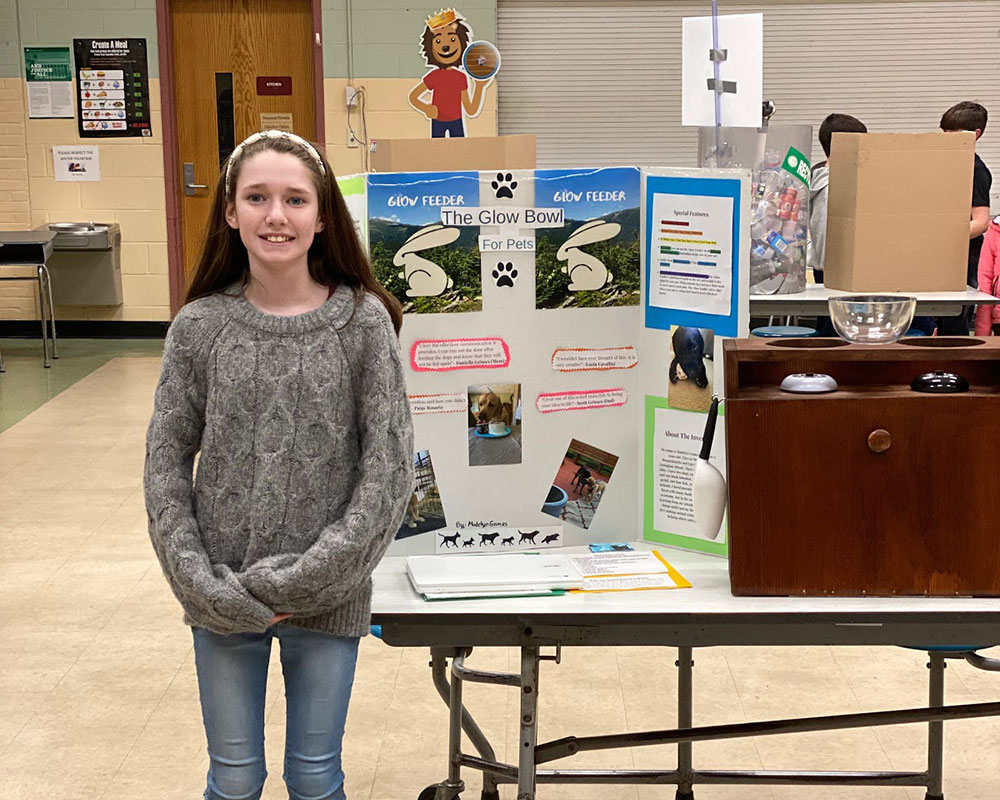Five elementary school students in the Pentucket Regional School District will represent the Northern New England region in the remotely held Henry Ford Annual Invention Convention U.S. Nationals next month.
Superintendent Justin Bartholomew said sixth grade students at the Helen R. Donaghue School in Merrimac and Dr. John C. Page Elementary School in West Newbury participated in the Young Inventors’ Program this school year as part of the district’s STEM curriculum.
Students taking part in the national competition were sixth grader Jackson Miller, sixth grader Owen McDonald, fourth grader Camden Miller and fifth grader Charlie Botto, all students at the Page School, and Madelyn Grimes, a sixth grade student at the Donaghue School in Merrimac.
Grimes received the Animal Welfare award for her invention, a “Glow Feeder.” She developed a pet-feeding center with bowls that light up when pets finish eating, which allows everyone in a household to know the pets have been fed.
McDonald and Jackson Miller received both the Entrepreneurship and the Health and Wellness Awards for their Thermosleeve, a heated physical therapy sleeve that promotes blood flow and helps reduce pain.
The initiative was led by Susan Simmons, a science, technology, engineering, arts and mathematics—STEAM, for short—teacher at the Page, Donaghue and Dr. Frederick N. Sweetsir Elementary Schools and Hilary Seager, a sixth-grade teacher at the Page Elementary School. Seager also offered an after-school inventors program this school year at the Page Elementary School for students in grade three through five.
“As a district we recognize the importance of the STEAM philosophy and embrace opportunities where students can connect their learning in the areas of science, technology, engineering, and math with arts practices, elements, and design principles,” Seager said. “The STEAM curriculum challenges students to identify and solve real world problems through the engineering and design process.”
Simmons said the students “worked hard and persevered through many iterations of their invention designs to come up with successful and marketable products that solve real world problems.”
The students will give presentations on their inventions during the national competition, which takes place online from June 3-17.
